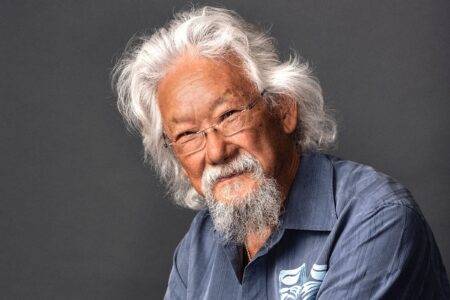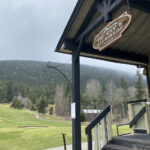SUMMING IT UP GRAND FORKS: Long day of meetings engages locals in dialogue
The new meeting format for Grand Forks city council opened last week with delegations and discussions throughout the morning while the evening meeting on the same day covered bylaws and regular reports.
Council’s series of meetings took place on Monday, Mar. 4 and the new format seemed welcomed by locals with the numbers in the gallery hitting double digits.
Tourism advertising
Sandra Barron, representing Visitor’s Choice tourist magazine, pitched the city to continue their advertising presence in the publication.
“Our tourism industry simply cannot rely on the tourists that are traveling through our communities, we need to establish our communities as a destination,” said Barron. “We need to instruct tourists where to travel and where to spend their tourism dollars. We have to remember that Grand Forks is like every other community out there, we’re all fighting for the same tourist dollars. Failure to promote our area is just sending those tourist dollars elsewhere.”
Council agreed to fund the advertisement in this year’s magazine.
James Donaldson Park use
Staff provided the old policy for the use of the James Donaldson Park facilities for comments from council and the public to guide their preparation of a new policy as directed by council in a meeting in January.
“One of the ideas here is that we look at more multi-use of that park. It’s a gorgeous facility, costs a lot of money to keep and we’re asking ourselves, with our asset management glasses on, are we getting the most from this asset? The answer we’re getting back is no,” said mayor Brian Taylor at the meeting.
City administrator Doug Allin reported that he had recently attended a meeting with the Grand Forks International organizing group and that the existing policy needs to be sensitive to the needs of the annual event including booking policies. Booking for the facility is done through city hall and not any other organization, clarified Allin. If different functions access the facility clarity would be needed regarding privately owned equipment or other assets that are stored on site.
Taylor also mentioned that the policy needs to cover off leasing options in order for the city to charge for use of the grounds if needed.
“(The park) has some neat things that our other parks don’t have – it’s got a gated access, it’s already got seating, it’s got liquor licence – so some of the other uses are just incredible opportunities,” said councillor Neil Krog who supported the development of a new policy.
Councillor Gary Smith suggested that removing restrictions on the use of the facility would make it available for many other events and year round use. Taylor noted that there might be some complications in moving bases, etc. to use the grounds for softball activities, but could become attractive for tournaments if the issues can be addressed.
All councillors agreed that caution regarding activities to ensure the needs of the GFI and protect the infrastructure in place, but to make the facility open to further activities is important. Allin suggested that public consultation is important and that the policy may take some time to develop with final adoption possibly as late as 2014.
“It’s very controversial. I have to say I think there are some people that will feel that we’re selling out a traditional activity in this town of baseball. But life changes and the opportunities in front of us at this point are a myriad of other uses that could really make the whole baseball thing even work better,” Taylor concluded.
Sustainable communities conference
Councillors Neil Krog and Gary Smith attended the national Federation of Municipalities conference focused on sustainability last month. Krog said highlights from his perspective were around smart growth.
“I’ve looked at smart growth before, but not in the context of infrastructure and sustainability. Municipalities are realizing that our conventional growth patterns are driving an unsustainable growth and spending,” said Krog. “Whereas compact, transit oriented development results in lower infrastructure costs, lower density.”
Presentations from cities pursuing different growth plans demonstrated not only the costs savings to infrastructure budgets, but improved impacts on climate problems and population density, said Krog adding that council could benefit from a role-playing exercise on growth planning that he participated in at the workshop.
“It seemed that most small cities, we wait around for developers to come and then we’re happy to have development rather than pre-planning the infrastructure,” said Krog. “In the past communities, even ours, has focused on attracting industry… but we need to change our mindset.”
Krog noted that Grand Forks is ahead of some other municipalities in the style of growth staff and council have chosen over the years as well as being advanced in infrastructure planning.
One idea for sustainable growth that Krog really appreciated are the ideas of setting up electric car charging stations and transit available for residents.
“I think a realistic designation is an electric community,” said Krog. “You place the stations in places that people require and see. I see economic development. If it was downtown people would eat, shop, visit while their cars top up.”
Regional economic development
The Boundary Economic Development Committee is meeting regularly, but the participants are questioning the usefulness of the group.
“We’re really struggling with where we are going at this point,” explained Taylor. “We have a number of things that we’re cleaning up that are past business… I’m not sure of the outcome of the coming meeting, but I’m wondering of the necessity of our meeting (in the future).”
Taylor suggested that the better efforts at the regional level would be to meet on project basis only as many of the areas are balancing their local efforts against regional work. The budgeted contribution for the service from the city is about $20,000 annually. Taylor said the largest contribution to the regional table is from Area E in the West Boundary after Christina Lake pulled their funds out of the service.
Other
City staff asked for approval to purchase new office furniture to a cost of $12,500 to accommodate new staff and the changes needed to accommodate them as well as replacing 30-year-old furniture currently in use.
The diversion of Overton Creek to prevent the ongoing problems identified with the slag pile on Granby Road is still on target for completion by early May, according to Allin as he responded to questions from the gallery at the meeting.
Smith suggested that the city staff consider a ladybug release to lessen the aphid infestation in downtown area trees. Allin responded that the city works staff can look into the option as a part of their parks program.
Early budget approval for an asset management project presented by Sasha Bird, manager of technical services at the budget meeting was approved by council. This includes the $215,000 for developing a prioritization plan for the road, sewer and water projects.
Council approved a land use acquisition, disposition and leasing policy that guides staff and council in land decisions.





















